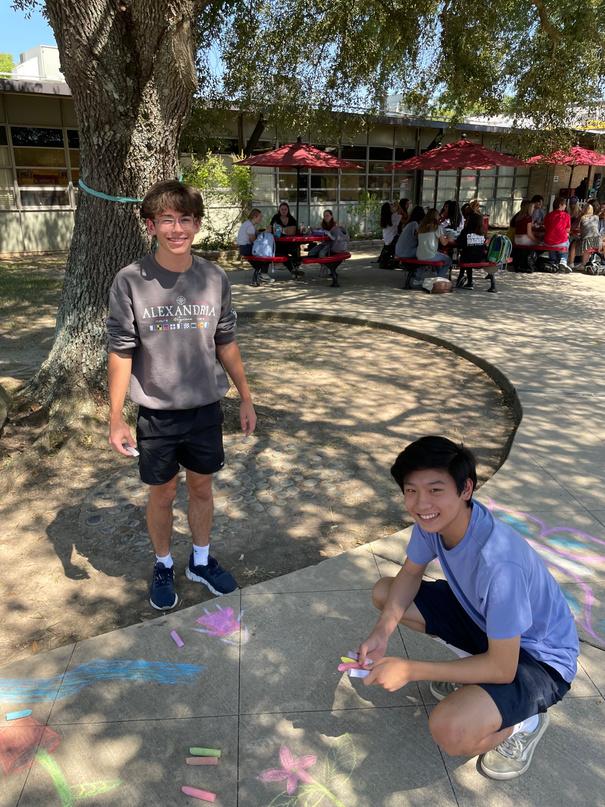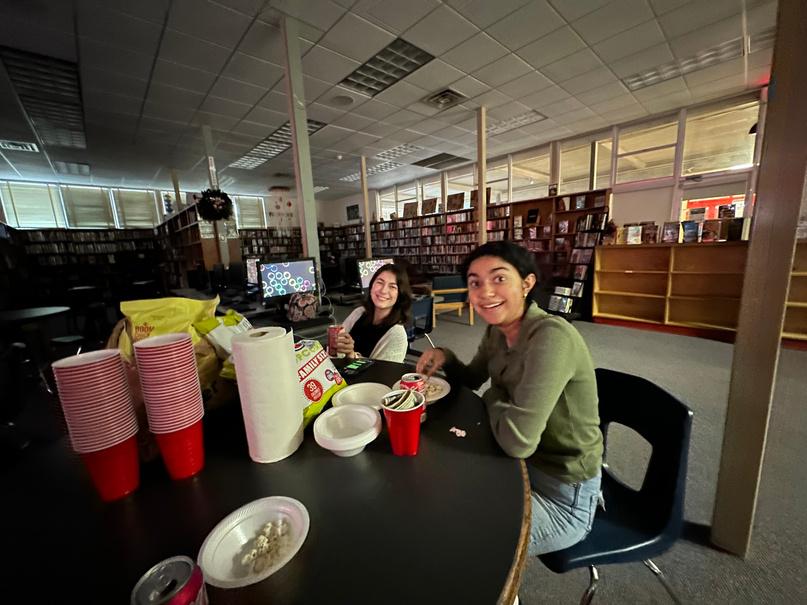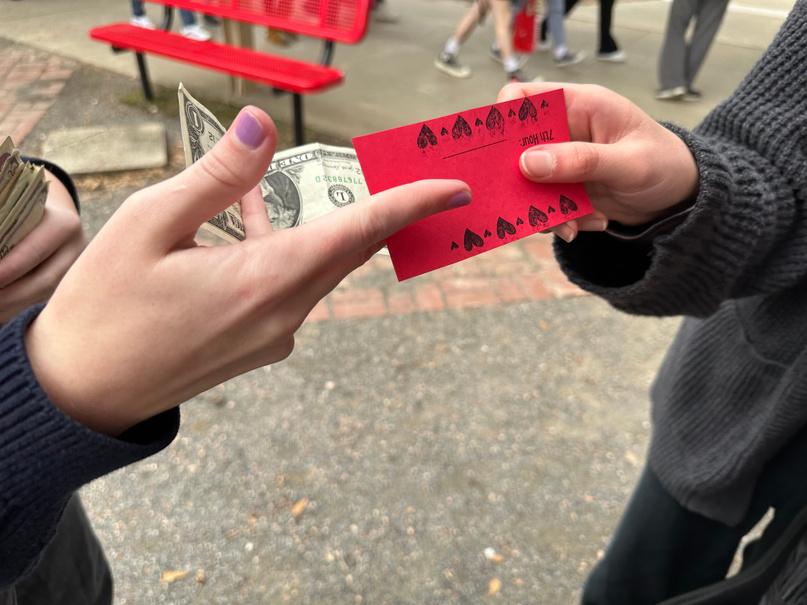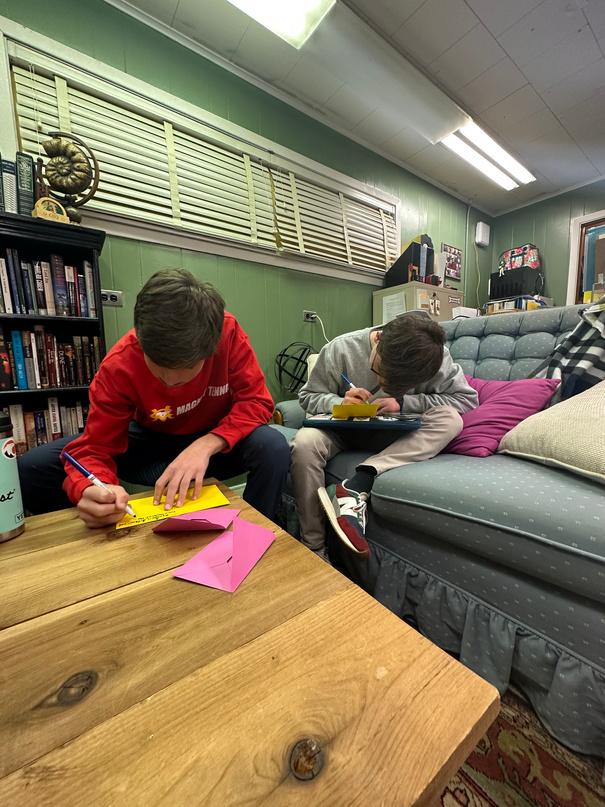2023: Magnet



Menstrual Equity




The Taliban & Women's Rights
Women In Theology
Juvenile Justice: Caddo's Girls
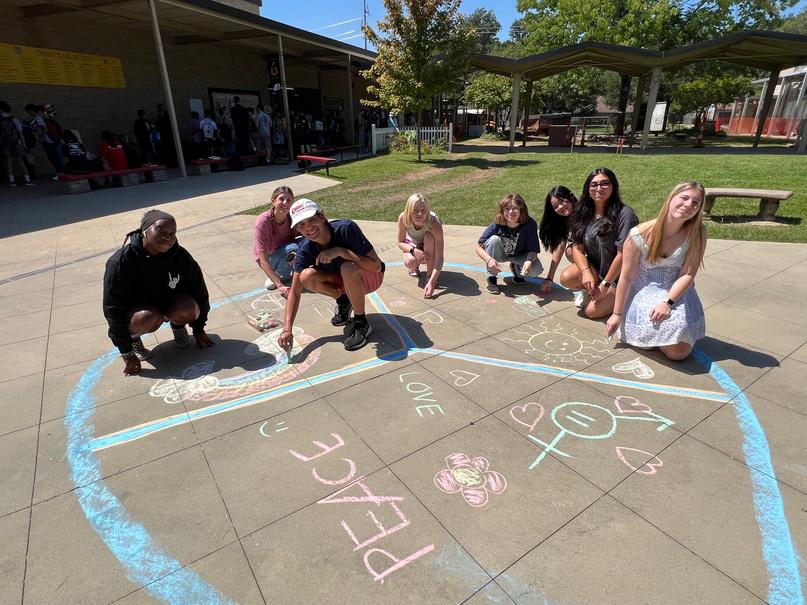
Poetry











Executive Editors: Executive Editors: Executive Editors:
Ananya Bhatia and Natalie Cockrell
Ananya Bhatia and Natalie Cockrell
Ananya Bhatia and Natalie Cockrell
Dear readers,
We are so excited to finally share the second edition of Ms. Mag! From Magnet’s treatment of our softball team to women conquering space, students have researched, written, and shared topics they are passionate about. With students of all grade levels contributing work, this magazine is a testament to the curiosity our Magnet community shares and promotes. Seeing a sophomore explain the complicated history of Southern Belles or junior boys writing creative poetry shows us that this magazine fills a need on our campus and will live on past our graduation in May. In countries like Afghanistan and Iran, this luxury of free expression is non-existent, so we hope this legacy will not only continue to be used to elevate Magnet but will also help students continue to shed light on events, injustices, and triumphs happening around the world.

Our inspiration for this project has always been Gloria Steinem’s Ms. Magazine from the 1970s. Her team electrified female-targeted media, drove the second wave of feminism, and we hope Ms. Mag holds our campus in a similar light. We proudly offer a platform that covers topics typically uncovered in classrooms or even local papers, which would be impossible without Ms.’s revolution.
The two of us compile, edit, format, and design this magazine, but its content is entirely student created and oriented. Its publication would not be possible without our fantastic club members and teachers! That said, we hope you enjoy this edition as much as we have enjoyed putting it together over the last few months!
Sincerely,
Nat & Nons (Girl Up Co-Presidents)Mother Country
Rishi Sultana
afghan girls
Natalie Cockrell
Southern Belles
Ellie Lokitz
the march sisters
Ruby Knoebel
Teacher Features!
Ruby Knoebel
Women in Theology
Kyrsten Thompson
Ancient roman sexism
Sebastian Schaan
THE siren's Cry
Jack Randall
Women in Space
Zachary Seaton
6 7 8 9 10 12 13 14 15
Oh, Mother, you cast warmth— cardamom, cumin, cinnamon—across the metal of the pot, reflecting like your bony fingers against the makeup pan, your painted nails against the counter, your stony gaze against mine.
Oh, Mother: Step-Mother gave these gifts to you, generously. But she stole from you, too, didn’t she? She stole your livelihood, and you traded it for safety, opportunity, for a daughter. She handed it to your husband instead, and you were left shivering in the kitchen with baggage in your left hand and a swaddled baby in your right.
Oh, Mother! How can you bear it? I couldn’t imagine leaving as you did.
Leaving my Mother behind, for the cold of an empty kitchen, an empty home, an empty embrace.
Twenty years ago today, Afghan women and girls celebrated International Women’s Day with hope. After being denied rights under the rule of the Taliban, women hoped for steady advancements toward fulfilling their human rights. Today, however, the women and girls of Afghanistan are not celebrating. Instead, they are reminded of the twenty years of progress of their rights effectively erased by the Taliban. The 2021 takeover of Afghanistan by the Taliban caused a significant setback for women’s rights in the country. With their long history of oppression toward women, it is no surprise to the international community that their return to power has resulted in an extreme rollback of progress toward gender equity.
Under the Taliban’s 1996-2001 regime, women were subjected to severe restrictions on their human rights. They were banned from school, working outside the home, and could not leave their house without a male guardian.
Following the fall of the Taliban in 2001, during the United States' twentyyear occupation, women gradually gained fundamental human rights and freedoms, finally allowed to attend school and university, participate in politics, and work outside the home. Afghanistan even had a female Vice-President, Amrullah Saleh, until 2021.
However, approximately a year and a half ago, when President Biden ordered the removal of US troops, the livelihood of 14.2 million women and girls changed. Many experts say that the situation has reverted to pre-2002, as women are now denied their right to work, access to public spaces, health care, and can not leave their homes without a male chaperone. Violating these laws puts women at risk of severe punishment, including beatings, imprisonment, and even death. Throughout Afghanistan, women report feelings of invisibility as they are suffocated and forced into prison-like conditions. Perhaps one of the most significant blows to women's rights has been the closure of girls’ schools. According to the United Nations, over 3 million girls were enrolled in school before the Taliban’s takeover, where now women are banned from all forms of secondary and tertiary education.
Women have effectively disappeared from public life in Afghanistan. Several countries within the global community have condemned the Taliban, and many have pledged humanitarian aid to help Afghan women. As the international community is watching Afghan women being robbed of their human rights, it serves as a sobering reminder of how easily women’s rights can be stripped away.

Throughout time, southern belles have represented the ideal southern women, containing qualities such as: fragility, flirtatiousness, sexual innocence, beauty, and charm. These characteristics made southern belles the perfect voiceless women who are not able to truly stand in her own power. However, southern belles have become much more than their commonly known submissiveness and materialism.
Before the Civil War, southern belles started as the average unassertive women. Operating only as wives, mothers, and societal moral compasses, southern belles were dependent on men to protect them and their families. They supported and allowed the men to have a sense of valor and gallantry. Nevertheless, these women found their own ways to gain power. Ministers encouraged southern belles to donate their time to help charities and the less fortunate through social groups. Such groups served as a way for self empowerment, because they were able to observe society rather than contribute to societal expectations. Through these groups, southern belles were also able to form their own unprejudiced opinions. Their newfound knowledge led them to form groups that supported common problems, such as their husbands' alcohol abuse. Selfsufficiency was not only prevalent through this.
Originally, southern belles received very little education, but slowly, their education grew.
At ages 12-14, girls were sent to boarding schools where they would learn etiquette and recieve an education, presenting an important opportunity for them. At these schools, the idea of submission to men was not important, giving women the ability to find themselves. Young girls were able to have a peer group they identified with and could talk intellectually with. Even though southern belles eventually returned to society and the normal social position, they still had more education and a larger stance socially.
During the Civil War, southern belles’ roles in society shifted largely. With the men away, the women no longer had protection that they assumed was needed. They also had to step into the jobs and roles that men had, forcing them to do jobs that they never imagined. Eventually, they found themselves with more work than the men had ever been doing. As the war ended, men returned home with the thought that women would return to their previous domestic state. Luckily, the women did not do so. The traditional roles had changed too much for them to return to their previous state. Suffrage movements and education for women began to sweep through the South, affecting their mindsets as well. The traditional values like femininity and loyalty still remained instilled in the southern belles, but they began to make their own choices. The journey of the southern belles through time altered the traditional viewpoint of belles and created the strong, independent women of the South.



I want women to get wages that are equivalent to their male counterparts We need paid maternity leave. We need paid paternity leave too. There are still societal norms and expectations in terms of traditional family dynamics that still make things really hard for everyone. We have a lot of work to do to normalize these shifting dynamics and to make it easier for people to not feel like they have to be one way or the other because every family is different and every person is different
You can’t tell me that there’s not a difference in the number of women CEOs and male CEOs, and you can’t tell me that it’s not a whole lot of women driving business models and being innovative out there for these companies, so why is it that we don’t see as many of them at the top?
I never get to talk about women in history as much as I want to. Most of the important people to know for the AP class are men, but a dog makes the cut, Sergeant Stubby from World War I. One of my favorite websites is “Rejected Princesses,” and I’ve tried to work in a reference to it. Students are often shocked and interested, sometimes angry, when they hear about these amazing stories of these figures in history, and they’ve never heard of them before I remember feeling the same way It's really important to learn about these voices that have been silenced for millenia
One of my grandmothers had nine living children and went to college in the sixties or seventies and got her nursing degree when she still had littles at home, and my other grandmother was just this amazing person. She was an Annie Oakley kind of character, and she carried a machete, a beretta, and a slingshot with rocks in her Ford Torino station wagon. She had to work super hard to support her four kids Both of my grandmas were just these amazing role models of ladies who worked really hard, and they may have started out their married lives with their husbands being the bread-winners, but they ended up being economically sufficient on their own ground My parents got divorced when I was a kid, so my mom had to work two to three jobs to support us, and she sort of instilled in me this stubbornness If something needs to be done, you do it If you overstep, maybe you apologize later To take a line from Dirty Dancing, “nobody puts Baby in the corner,” and I feel like my grandmas and my mom and my three older sisters have shown me that you work hard for what you want and go after it
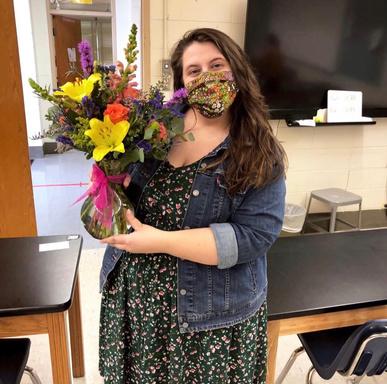
Ms. Lawrence. I want to be her when I grow up. She’s a wonderful teacher, a great mom, and has a great outlook on life. Whenever I’m in a bad mood, she makes me want to be better She’s the best I want to be her I think probably a lot of people want to be her
That we won’t have to keep re-legislating the same things every generation It would be nice if we could make a step forward and then keep the step forward instead of going backward every twenty years, which is not an optimistic outlook, but it’s kind of how it feels right now
I would say fight against peer pressure somehow I know that’s so hard when you’re a teenager, but I think it lets you develop a strong sense of self and make decisions and feel good about them without feeling like you have to explain yourself to other people

Sor Juana Inés de la Cruz lived in Mexico in the 1600s, and she was a nun, but there were no other options. She refused to get married and educated herself even when she was kicked out of school, and she was a poet, philosopher, and theologian, and she really made a lot of people in the Catholic Church mad to such the extent that she ended up writing this long diatribe against what her bishop had said and how she disagreed, citing her sources, and then she signed it in her own blood They call her the “Mother of Modern Philosophy” as a thinker at a time when it was dangerous and very difficult to be such.
I think it’s very important to be able to see yourself in media and to have a variety of different characters and archetypes so that you don’t feel pinned into a box.
It’s very important, and I know friendship can be really hard, but it’s vital. I’m still best friends with my best friend from high school. We talk every day; we talk on the phone, we text, we send TikToks, and I’m going to be in her wedding next year.
R.C. Sproul, Dr. Zakir Naik, Maimonides, all famous religious scholars, beloved and studied by many. When you meet people of faith or those interested in religious studies, you’ll most likely hear referenced works by renowned scholars that help the faithful learn more about the history and inner workings of their faiths. But when’s the last time you heard of the women in this conversation? The world of religious studies is dominated by male authors, textual critics, and scholars. In this article, we will discuss women that shape religious thought for thousands across the world. Within the Catholic Church, some saints are given the title Doctor of the Church for their contributions to doctrine of the Church through writing, research, or study. These four women are the only female Doctors of the Church: St. Teresa of Avila, St. Catherine of Siena, St. Therese of Lisieux, and St. Hildegard of Bingen. These women were all astounding writers who paved the way for Christian ascetic/spiritual thought. Women like Ustadha Maryam Amir and Nuriddeen Knight are contributors to the Yaqeen Institute of Islamic Research and Muslim scholars/lecturers. These women have promoted the study of Islam to young women and the education of thousands of Muslims across the world. Here in Shreveport, we have a trailblazer of our own!
Dr. Cheryl White PhD is a local leader in Christian religious studies and history. Dr. White has multiple degrees in history, philosophy, European history, and theology. Dr. White is a Professor of History and Philosophy at LSUS, with over 26 years of teaching experience! Dr. White has written multiple books on Shreveport, folklore, and her study of history/theology, including: Shreveport Martyrs of 1873, The Shadow Files, Round Trip to Rome and Who is the Man of the Shroud?
Dr. White has led the efforts in the canonization of Shreveport’s Five Martyr Priests, study on the Shroud of Turin, and Faith Formation education for Catholics in the Diocese of Shreveport. Dr. White’s favorite woman in faith is St. Mary Magdalene for her evangelization and the story of her transformation. Here is a word of advice she has for young women considering careers in academia: “Learn as much you can, work as hard as you can. Always consider not just one field but, perhaps, an additional field. In the fields of history and theology, especially, women have to work a little harder to make the same advances men in the field will do. Just be prepared to work hard and learn as much as you can!”
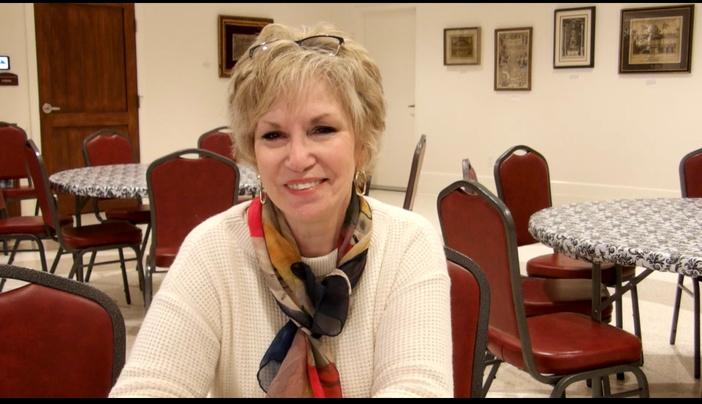
The next time you take a look at the modern religious thought in today’s world, you can thank the women who came before us and the women today who continue to lead the way in education and faith!


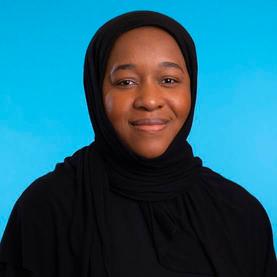

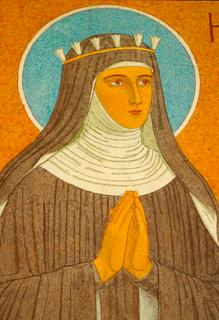
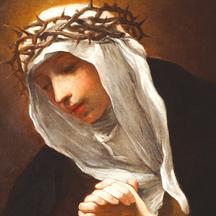 Theresa of Avila (top L),Dr. White (center),Theresa of Lisieux (top R),Catherine of Siena(middle L), Hildegard of Bingen(middle R), Maryam Amir (bottom L), Nuriddeen Knight (bottom R)
Theresa of Avila (top L),Dr. White (center),Theresa of Lisieux (top R),Catherine of Siena(middle L), Hildegard of Bingen(middle R), Maryam Amir (bottom L), Nuriddeen Knight (bottom R)
The Latin language is one of great importance to the modern world. Several of the languages in Europe, such as French, Spanish, and Italian, are Romance languages, meaning they were derived from the Latin language since they were all areas under the rule of the Roman empire. English, although technically Germanic in origin, has many words relating to Romance languages and thus the Latin language and culture, a culture rooted in rather sexist values. Many know Rome as being a beacon of Europe, Republics (for a time), strong leaders, and extremely influential art and culture that is still important today, but there was a massive layer of misogyny present in this civilization. Despite them being seen as having the same status as their husbands, women in ancient Rome were not seen as equal to their husbands, fathers, or any other male counterpart. This can most clearly be seen in their names. In Rome, the number of names you had related to your position, with more names meaning higher status. Slaves and children only had one name (but they would get more if they were freed/aged), women only had two names, and men/official Roman citizens had three names, effectively meaning women were not seen as citizens in Rome. Furthermore, women often did not have their own names, usually taking the feminine form of their father or husband e.g. Julius and Julia, Octavian and Octavia, or Domitian and Domitia. Women often kept their family name, but their distinctive name was entirely dependent on the most prominent male figure in their lives.
Granted, not every Roman was incredibly misogynistic, including one of the most wellknown Roman poets, Virgil. Most notable for being Dante’s companion in The Divine Comedy and the author of The Aeneid, Virgil was responsible for several well-written female characters across his works.
He created the strong, responsible Queen Dido of Carthage, the loving, yet firm Venus, and a myriad of others. Even his versions of well-known myths contain more female roles than other versions, with his iteration of the Orpheus and Eurydice myth involving Eurydice chastising her husband, while most versions do not let her speak much.
Granted, Virgil is somewhat of an exception, as other notable Roman poets, such as Ovid, author of the Metamorphoses and another iteration of the Orpheus and Eurydice myth, were incredibly misogynistic and thought women should be seen, not heard. This general sexism and misogyny led to many words with Roman roots being related to sexism. For example, the word “Testis”, the Latin word for the male sex organ, is the direct root of “Testes” and “Testify”, the former due to anatomical reasons and the latter because only men were allowed to testify in court. However, not every word with gendered, sexist implications came from Rome. For instance, “Hysteria” came from “Hystera”, the Greek word for uterus, resulting in the affliction being used to brush off female bodily concerns.
On a lighter note, many harmless customs were actually started as a result of gendered words. For example, the Roman word for boat “navis” is feminine, which is actually the reason sailors refer to their boats as “she” and “her”. Ultimately, it is important to look back upon history and the origins of many of our words and customs to ensure that the past does not repeat itself.

Graceful figures glide across the pavement, Their footsteps leaving gilded imprints behind them.
A song erupts from the bases of their lungs, Their voices somewhere between orchestral elegance And combative calamity. This song describes the unceasing strife, The women bearing the back-breaking burden
Of dispelling the delusion of equality, The reality of rampant injustice

Concealed for centuries by false freedom fighters.
It is an ode to all who can hear, But do they decipher what enters their ear? Like the song of the sirens, it draws you nigh. At first it is vague what the verses contain But when you step foot on their island of pain


The powerful song sounds more like a cry. Their tongue is only sung by their own kind. The only ones who need not hear the message
Are the only ones listening. The aimed audience watches As they would watch army ants laboring to lift a leaf
On July 20th, 1969, Neil Armstrong became the first man to walk on another celestial body; the moon. Following him, eleven other men have stepped foot on the moon. This moment served as a pivotal moment in human history, marking the start of our expansion outwards into the universe. Countries across the entire world celebrated this accomplishment of humanity as it brought the entire world together. This accomplishment brought countless numbers of people together, and inspired an enormous wave of STEM careers in our society. And yet, all of the Apollo missions have been crewed by men. No woman has ever stepped foot on the moon. Despite historic prejudice against women in STEM, here are some female astronauts who paved the way for other women in STEM and space, and whose accomplishments will be eternally engraved in the foundation of spaceflight:
Valentina Tereshkova was the first woman in space (1963), circling the Earth forty eight times aboard the Vostok 6, and spending more time in space than all of NASA’s Mercury astronauts combined.
Mae Jemison became the first woman of color in space (1992) aboard the space shuttle Endeavour. She holds a degree in Chemical Engineering and African-American Studies from Stanford University, and later attended Cornell Medical School, earning a Doctorate in Medicine.
Susan Helms flew up to the International Space Station as the first female crew member on the ISS (2001).
In 1980 she was a part of the first class to ever include women graduating from the United States Air Force Academy.
But what's happening today? It’s been over fifty years since the Apollo missions ended, and since then no human being has been back to the moon…and that’s all about to change. The Artemis program, named after the ancient Greek goddess of the moon and hunting, is propelling the first woman in all of human history to the moon.
The Artemis program aims to bring a sustained human presence back to the moon. In coming years, Artemis missions will build the foundations for future exploration and experimentation. A total of nine women have been selected for this extraordinary program; one of them destined to make history.
Christina Koch, Jessica Meir, Anne McClain, Kate Rubins, Stephanie Wilson, Nicole Mann, Jasmin Moghbeli, Kayla Barron, and Jessica Meir were the nine women selected to take the next step in space exploration. All of these women hold extremely high degrees in fields of engineering, physics, geology, biology, and more! They are all prepared to serve as an inspiration for young girls and other women in STEM all across the country and world, all while solidifying their place as some of the best in their field.
We’re taking our first steps towards an infinite expanse of mystery, so let’s celebrate some of the brave women in STEM who are leading the way. For more information, go to “www.nasa.gov” or follow NASA on its many socials!

A mere three-minute drive east from Magnet is a place most forget about— Caddo Parish Juvenile Court and Detention Center (CPJC). And up until this summer, I was part of our community’s majority, complaining about how this city’s too tiny, worrying about rising crime, and yearning to leave Shreveport and never look back. But after two months of interning and learning from CPJC’s staff of 80 hardworking public servants, I now cannot imagine myself looking any other direction but at the root of so many Caddo issues— juvenile justice.
Issues of racial disparity, an underfunded education system, and generational poverty are all evident in a simple drive around our neighborhoods, and each issue disproportionally affects young girls. Judges, probation officers, clerks, and security guards will all tell you they see more single mothers and grandmothers in the court’s lobby than any other guardianship. 100% of girls serving time in the Caddo detention center have a history of sexual assault, molestation, or sex trafficking. 30% come in with an untreated STD.
“This is the frontlines,” said Mr. Clay Walker, Director of Caddo Parish Juvenile Services and Magnet parent, in reference to our community’s justice system. The parish leads the world in incarceration rates, continues to constantly cut juvenile services’ funding, pools a 3.5 million annual budget deficit, fails to meet the youth’s mental health needs, and never has enough staff to meet rising caseloads. The issue of gender equity in juvenile justice is forgone because current conversations are simply about meeting the youth’s most basic necessities. In conversation with State Representative Delisha Boyd on the topic of education in juvenile detention centers, she explained that with the current legislators dominating our state legislature, the topic would probably be lost in a partisan frenzy.

The trappings of funding, overworked public servants, and hyper-partisanship are not unique to Caddo or Louisiana, they are a national crisis. But, we benefit from being a smaller, closer-knit community. We, as Caddo, can and must rally behind juvenile justice advocates, workers, and the female youth they serve. Because otherwise, they do not have anyone else in their corner. Supporting outside organizations such as CADA, The Jewell House, The Rutherford House, Volunteers for Youth Justice, and Restoration Crisis Center all contribute to this effort.
Every girl in the Caddo Detention Center, on probation, or standing in court is serving for a crime, but we as a community fail to remember that most of those girls come from lives of poverty and trauma. If we continue feeding the current cycle, they are more likely to re-offend, and their eventual children are more likely to end up within our justice system. Most often, girls in the juvenile justice system never see justice served for the crimes committed against them.
The Detention Center is split into 3 pods; 1 for older boys, 1 for younger, and Pod 3 is for the girls.I like the girls who like dolls, who dress them up all pretty, brush Barbie’s hair and sit her in her dream house. I like the girls who like dinosaurs, who climb in the sandbox and mud, have great battles with a T-rex and raptor, roaring with fury.
I like the girls who wear dresses, I like the girls who wear overalls, I like the girls who wear both.
I like the girls who like makeup, who get excited about new colors and formulas, meticulously rouge their faces every morning.
I like the girls who like sneakers, who wait with bated breath for the new Jordans, careful not to crease the toe as they walk.
I like the girls who make art, I like the girls who play sports, I like the girls who do both.
I like the women who are mothers, who make lunches for their spouse and children, who kiss them goodbye at the door. I like the women who have careers, who wake up for their 9-5, who are too exhausted to cook dinner at home. I like the women who homemake, I like the women who breadwin, I like the women who do both.

I like the women who are youthful, who play the games with their grandkids, who travel the world, who never stop dreaming.
I like the women who are sensible, who pass on recipes instead of games, who rock in their chairs, who whistle their songs. I like the women who have fun, I like the women who have wisdom, I like the women who have both.
I like girls when they laugh, and when they cry.
I like girls when they smile, and when they frown. I love girls.
The history of softball is a long one From its origins as a baseball alternative for women to its contemporary status as a safe space for female athletes, softball has been used to challenge societal norms and provide a platform for women's empowerment
In the early 20th century, baseball was viewed as a strictly male sport, and women were not allowed to participate in professional leagues. However, softball emerged as a popular alternative for women, providing a space for female athletes to compete and develop their skills Softball was created as a version of baseball that was specifically tailored to women's abilities, with a smaller ball, a smaller field, and underhand pitching, which places more emphasis on leg strength and coordination rather than upper body strength The emergence of softball as a sport for women allowed them to push back against societal expectations and demonstrate their athletic prowess.


Despite its historical significance, softball continues to face challenges. In many ways, softball is still seen as a "lesser" sport compared to baseball, with fewer resources and less attention from the media and society at large. Female athletes in softball often face discrimination and a lack of support, both in terms of funding and recognition.
Even here at Magnet, the entire school community tunes into both men's and women's soccer; however, there is a noticeable lack of school-wide support when it comes to other sports.
Despite these challenges, there is a reason for optimism on our campus. Magnet’s softball coach, Samantha Guile, has completely revamped and recruited an amazing team Our girls are winning games left and right, have cleaned and handplanted azaleas to beautify their field, and there have been overall investments in the program from the administration.
Women's college softball has grown in popularity recently, with many talented athletes showcasing their skills and drawing large crowds. Additionally, many have advocated for establishing a Major League Softball league, which could provide much-needed resources and attention to the sport, helping to level the playing field for female athletes and promote greater gender equity in sports.
Ultimately, the story of softball is a story of resilience, persistence, and empowerment. Despite facing significant challenges and discrimination, female athletes in softball have continued to push forward and demonstrate their skills and abilities As the sport continues to grow and evolve, it will undoubtedly play an essential role in the ongoing struggle for gender equality in sports and society.
The best way to help out magnet’s own team is to come to their games!
I finally opened it, the folded note that antagonized me from its perch on my dresser. After thirty-six hours of willed ignorance and violent curiosity, I undid the mystery parchment’s crisp folds. It was from my mom. I don’t know why I was surprised.
“When is it ok to be ok?” it asked.
My breathing stalled. Never before has black ink made me so numb. I fear that I will only know the answer when I find my own glimmering key and see those pearly gates swing open. All answers will make themselves known in eternity.
Show me the line where the bay meets the sky, the horizon in its velvetine glory Can we stay on this September shore for the rest of time? Or at least for the night; I want to see the stars shine bright and collide on the galaxy’s highway We can sit and writhe as we know we can do nothing, absolutely nothing, as we rest on the grains of sand and realize that we are the grains of sand in the universe’s shoreline, absolutely nothing at all because we are so small and the stars’ accident was not our fault and there is no way we can help when we are all the way down here Is this how my mother feels?
I am the star in the Great Collision of the San Francisco Sky, so she must be the apathetic ant on the shoreline She tried to send me a message: a folded sheet of paper. It distracted me as I traveled at light speed. That is why I crashed into the blazing ball of light in the sky.
OCTOBER
Nannie made pumpkin bread, except she forgot the cinnamon. Don’t ask how a woman who needs help putting on her own bra and refuses to take a bath is able to bake pumpkin bread; I wouldn’t have an answer. Perhaps she will find this answer in her eternity. I think it’s nearing; the brain never waits for the body. Perhaps her mind is in her eternity now, and she is keeping these answers to herself.
I am proud of her for only forgetting the cinnamon I would expect her to forget the cardamom, too, and the temperature settings on the oven at least Was this her terminal lucidity? Was this her miracle of remembrance before she wields her glimmering key?
When she goes, I hope she will invite me Or, at the very least, write to me
“This November there seems to be nothing to say ” - Anne Sexton I can’t believe I turned eighteen
Oh, my digital diary! This Christmas, Nannie’s gift to me was my very own glimmering key. Sipping sweet tea, she showed me her lovely lavender latch-unlocker. It compliments my brand new bronze beauty so well and we will unlock our pearly gates together and we can ask eternity all of our questions!
After the doctor pronounced Nannie as passed, I told my mom I think that it is ok to be ok now. I think she believed me because my face beamed with peace, and I wiped the new year ’ s tears from her cheeks. I think I would like to have her there with me, in the resting place. I wish Nannie gave her a glimmering key, too, one of carved marble inlaid with lapis lazuli.
On my night of departure, I told Mom not to worry about Nannie and to go to the sandy shore of the San Francisco Bay, where she can see that shimmering spectacle in the sky I told her it would hurt to feel like an ant, but she mustn’t worry because I will write to her I will tell her all of the answers I find in eternity, I promise She won’t have to tuck any more creased papers housing cryptic questions under my door She won’t have to worry She won’t
Mom,
Eternity said that it is always ok to be ok once you enter the pearly gates
Menstrual cycle (noun) : the process of ovulation and menstruation in women. Commonly occurs every 21 to 35 days and lasts two to seven days.
It is no secret that women menstruate. Our society would not continue without it; women must go through menstruation to be able to have kids. This process, however, begins at a young age, most commonly starting in girls aged 12-15. This means that middle-school aged girls are forced to deal with the reality of being a woman years before they would ever plan to become mothers. Common period symptoms include moderate to severe bleeding, cramps, headache, nausea, mood swings, appetite changes, and poor concentration. Though this can be manageable, it is both mentally and physically draining on young girls’ bodies during the school day.
When prompted with questions about their menstrual cycles, 50% of students at Magnet who menstruate said that they have stayed home or checked out while on their period with their period being the sole cause of this absence. More than two-thirds of respondents said that they have to leave class more often to deal with their period. As periods typically occur in biological females and not males, this process disproportionally affects female students. A stunning 86% of respondents said that attending school seems significantly more difficult while on their period due to moderate to heavy bleeding, cramps, and poor concentration.
Female students experience the same expectations as their male counterpartsgetting to class on time, going to the restroom during class change, and staying attentive for 55 minute classes - while experiencing these hormonal changes and lack of focus. Though these educational expectations should not be lowered, there are reasonable policy changes that could occur that add unnecessary stress to a female student experiencing their period. Many of the Magnet students surveyed reported that they feel added stress from having to deal with and manage their period during the school day (ie. change the pad/menstrual cup they are wearing or put in a new tampon). Though there are five minutes between classes where students could use the restroom, this proves to not be enough as most bathrooms have few stalls and long lines. Thus, female students are forced to miss instructional time to deal with their periods (assuming their teachers allow them). Additionally, many students reported that they feel added stress when having to worry about menstrual products to use. Aside from the cost of menstrual products, it can be difficult or embarrassing for girls to figure out how to bring menstrual products to school and to the bathroom. Thus, the most logical alleviation to this problem would be the implementation of free menstrual products into public school restrooms.
Currently, Louisiana Representative Aimee Adatto Freeman is sponsoring a bill to require free menstrual products in public schools statewide. She successfully passed a bill last year to exempt the “pink tax,” which was the luxury sales tax on menstrual products. The purpose of both of these bills is to encourage school districts to realize the disadvantage menstruating students face every month and take the burden off of these young kids.
By: Merritt HughesDo you feel that your period (either pain or bleeding) has distracted you during class, a lecture, or an exam? (taken from sample of Magnet students)

NO 8.3%
YES
91.7%

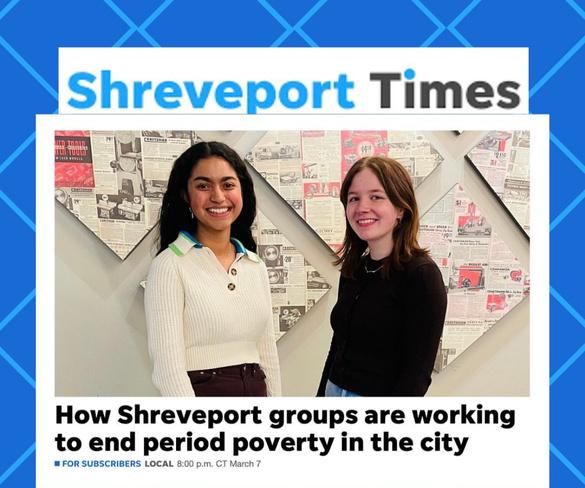
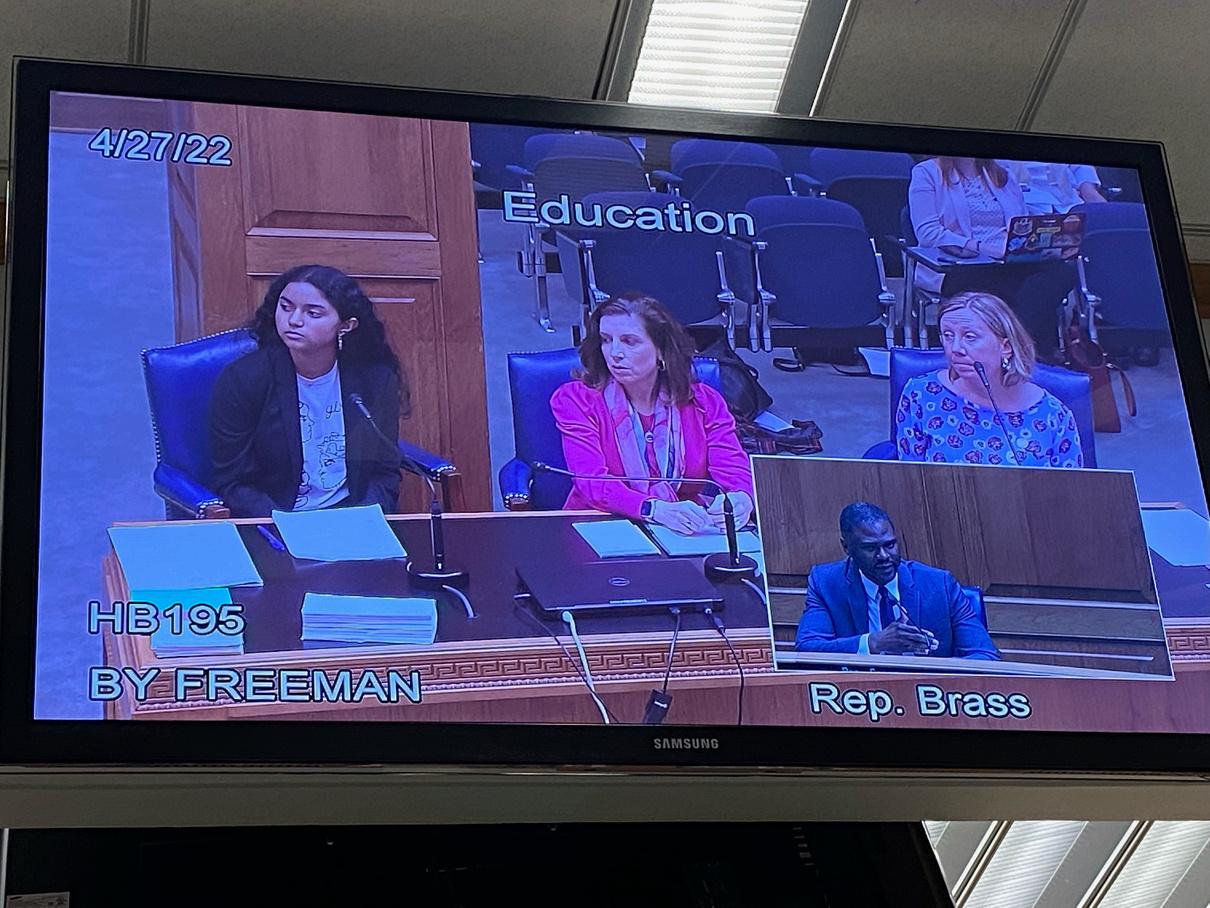

 By: Mr. Medlin
By: Mr. Medlin
Surely you have heard the name Mary Jane Malone in your time at Magnet, whether that time has been only a few months or almost four years. There is a picture of her next to the office on C-Wing, if you haven’t noticed it. What everyone seems to know about her is that she was a former student, and many know that she passed away far too young, at the age of twenty. I would like to tell you about the Mary Jane that I knew, so that we as a Magnet family can better understand why we honor her.
The Malones lived a few houses down from my family on Leo St. in Broadmoor when I was a kid. Like, a small kid—three/four/etc. Their house was our landing spot on Saturday afternoons and evenings after school and work, when we all wanted to be somewhere else. The Malones came to our house too, but I mostly remember being over there. Our families were very close; my parents were great friends with hers, but more than anything, my sister and I just always seemed to want to be around Mary Jane and her brother. We moved when I was four but stayed close, and MJ served as my main babysitter (sometimes sharing duties with Mrs. Carnie) from when I was about eight and she was old enough to watch us.
What I’d like you to know about MJ is that she embodied Magnet-ness in all the best ways. She read and wrote compulsively. She didn’t suffer phoniness and was funny in the kind of way you immediately love. She was subversive and didn’t trust authority, but had amazing relationships with her teachers. One time, she wrote me a song called “The Booger Blues,” and for the only time in my elementary school career, I got in trouble because I performed it on the South Highlands playground.
You don’t talk about boogers. That’s not okay. As a babysitter, she was wonderful. Her favorite thing to do was mix up odd and disparate substances in our kitchen in a big mixing bowl until it looked like human vomit. Then we put it on the sidewalk out front until someone came by and reacted to it. That was the punchline. MJ would have made some marvelous TikToks. Also, she would have hated TikTok. The last memory I have of her is after her freshman year at Texas A&M. We were making nachos and she said, “Please don’t become one of those people who lays out each chip in a neat layer.” I was too ashamed to admit I already was.
Ultimately, we remember Mary Jane for what she meant to Magnet, though. She was the head cheerleader (the team dissolved soon after she graduated, perhaps evidence of how much the team missed her) and one of the most popular kids on campus. At most high schools, this means something very different; here, it meant that everybody...EVERYBODY loved her. Mary Jane was an impossible combination of funny, talented, and smart, and we are proud to remember her through our MJM Book and Scholarship.
A strong, compassionate, yet culturally ostracized young woman learns to make a meaningful life for herself and others in a place and time where most people cannot survive or thrive. Her story was the basis for our Mary Jane Malone Whole-School Reading event this year. Readers learned about a part of American geography, culture, and history never before imagined by most of us. BLUE people? In America? That was different.
For this year’s Mary Jane Malone reading experience, the English Department of Caddo Magnet High School worked together to find a book we could all talk about and find common interests. After spending months reading a variety of books, your English teachers found The Book Woman of Troublesome Creek by Kim Michele Richardson. This book checked so many boxes on our list of must-haves: a need for and love of BOOKS, of course; reading level and material for all grade levels; and involvement of more subject areas than simply English, such as history, geography, biology, chemistry, psychology/sociology, social issues, etc. The book included historical points not usually covered in history; pack-horse librarians during the Depression Era; a geographical location and setting unfamiliar to most, Appalachia; real BLUE PEOPLE and the science behind that phenomenon; cultural and social prejudices; and so much more.
Not only did The Book Woman of Troublesome Creek make for some very interesting reading on multiple levels, but the novel also featured a strong young woman

as the book’s protagonist. Since our Ernest J. Gaines Literary Symposium theme this school year was Women in Literature, Cussy Mary fit beautifully into that idea by showcasing the life of a woman in a world that did not actually want to showcase her. Cussy Mary was dealt some unusual adversity in her life, then seemingly insurmountable, but she showed readers a way to handle those conflicts, rise above prejudice, and tackle the hardships in an honest, compassionate manner, while also trying to help others through terrible times.
Though the book could make us mad at times, and very sad (especially toward the end), everyone found something to talk about while reading our Mary Jane Malone WholeSchool Reading book. If you are curious about what happens to Honey, there is a sequel called The Book Woman’s Daughter where her story continues. Otherwise, stay tuned for next year’s Mary Jane Malone Whole-School Reading book—what could it be? We are open to suggestions!
Mr. Medlin & Mrs. Handrop, our amazing Girl Up Club Sponsors!A B C D E can't pick
You can pick one season to live in forever. You: grab your spf and swimmies for summer
hang with the birds and bees in spring
put on your winter coat
bust out your rake for fall
If you had to pick the majority of your belongings are: Green/ Yellow A B C D E Pastels /Blue Sliver/ Black Earth tones Purple/ Red
Debut/ Fearless 1989/ Lover
C
somewhere on the beach
a big city off grid in the woods
A B

You design your dream home. It is located: A A
E somewhere in the country
B
B C
C
a small town
BY: SADIE
D E E
Reputation/ Midnights
D
Your favorite animal is a: butterfly bird snake cat dog
dancing reading listening to music
MostlyBs: MostlyCs: MostlyDs: MostlyEs:
Folklore/ Evermore Speak Now/ Red
Down:

2. First female doctor
3. Directed grape and lettuce boycotts to support the unionization of farmworkers
4. Delivered abolitionist women’s rights speech “Ain’t I A Woman”

6. Actress who plays Janine in Abbott Elementary
8. First Spanish singer to be nominated for Best New Artist
Across:
1. She can be found “Crying In H Mart”
5. Youngest inaugural poet in U.S. history
7. Author and activist who wrote about race, gender, and class
9. Old Hollywood actress who helped popularize women wearing pants
10. There must have been an angel by this singer’s side
11. Wrote the Equal Rights Amendment
When putting together this issue of Ms. Magnet, the editors wanted to choose a publication date that signified something bigger than them, a date that honors women globally. Every year, March 8 observes International Women’s Day, a celebration of women in all spheres of progress, but also a reminder of the long road to gender parity. Bringing back Ms. Magnet on such a day is Girl Up’s way of honoring all of us, from the women working tirelessly to put make the magazine happen to the women waiting for their voices to be heard.

International Women’s Day comes from a cloudy background of conflicting timelines. However, the first official National Women’s Day was in New York City on February 28, 1909. It was here that both socialist and suffragist agendas were celebrated together. This idea soon gained traction in European nations, with the first International Women’s Day being held on March 19, 1911. More than 1 million people attended rallies worldwide. As most social progressivism slowed during the outbreak of World War I, the push for gender equity never stalled Most notably, Russian feminist Alexandra Kollantai led a massive demonstration beginning on March 8, 1917 (February 23 in the Russian Gregorian Calendar), linked to the Russian Revolution. After taking power, Vladimir Lenin recognized Woman’s Day as a national Soviet holiday in honor of Kollantai’s effort. Socialists in Spain and China followed suit, and until the mid-1970s, Women’s Day was associated solely with socialist nations. In 1975, the United Nations announced International Women’s Day to be on March 8, with over 100 countries celebrating by 2014.
As we navigate life in the Digital Age, we must remember the necessity for individualism in an ever-increasingly globalized world. International Women’s Day is honored in a myriad of ways, some countries adhering strictly to its founding political values, and others, like Argentina, commercializing it. We have seen different cultures take the idea of IWD and mold it to celebrate their own definitions of womanhood. Today is reserved for recognizing what womanhood means to us as individuals and to our communities. What does it mean to be a woman, to know a woman? Every year, March 8 reminds us to pay close attention to the women at work in every avenue of our lives. How can we revere the women who came before us, grow with the women beside us, and work for the women who will succeed us? Not just today, but every day exists for us to welcome these questions with open arms and carry on in the work that is before us.
Down:
Across:
Website:

https://sites.google.com/view/cmhsgirlup

Email:

GIRLUPCMHS@GMAIL.COM

